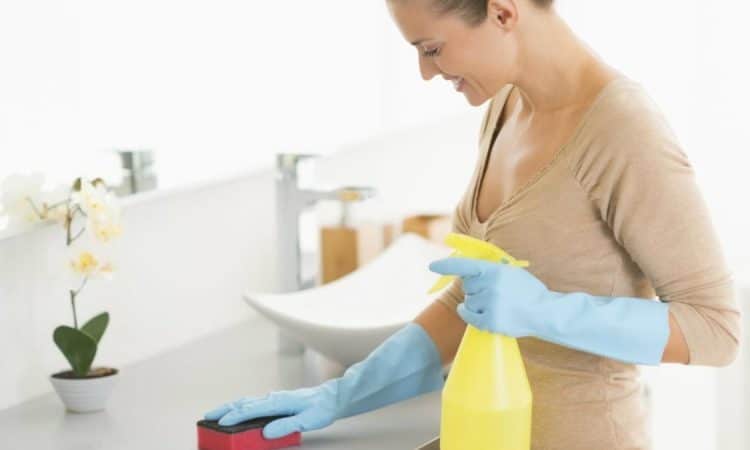Kitchen Scourer Should Not Be Changed Every Week or Month: Boticaria García Reveals the Exact Moment

The kitchen is the heart of the home, a place where we not only prepare our food, but also a space for gathering and celebration. However, this environment can also be a breeding ground for bacteria and germs. Numerous studies reveal that dishcloths and kitchen towels can harbor up to 45 billion microbes per square centimeter, making them the main culprits of cross-contamination during food preparation.
Therefore, it is important to instill cleanliness habits among all family members so that the environment is kept clean and organized. In this sense, the nutritionist and Doctor of Pharmacy, Boticaria García, has highlighted the need to frequently change such important utensils in the home as, for example, the kitchen scourer, something that she assures “nobody does well”.
Kitchen scourers and dishcloths are key for keeping our kitchens clean. However, using them on different surfaces and types of food too often can lead to bacteria breeding. It might surprise you to know that kitchens often have more bacteria than toilets, according to several studies. This is because scouring pads are perfect for bacterial growth. They’re moist and full of nooks and crannies that help microorganisms multiply.
A 2017 study found that kitchen scouring pads can harbor up to 362 different types of bacteria. Some of these are harmless, but we need to be careful not to cross-contaminate with bacteria like E. coli and Salmonella, which can be dangerous.
Cross-contaminationoccurs when microorganisms pass from one surface to another, and from there to our food and hands. This can occur, for example, if we use a scouring pad to clean a surface where there has been contaminated raw meat and then use it to wash dishes or counters.
To minimize this risk, it is essential to disinfect scouring pads and dishcloths regularly. Effective methods include microwaving, boiling or soaking in dilute bleach solutions. These methods do not completely eliminate microbes, but can reduce their numbers by more than 99.9%.
Disinfection methods
- Microwave: To disinfect a scouring pad, soak it in water and heat it in the microwave for one minute at full power. It is essential to make sure it is moist to avoid the risk of fire.
- Boiling: Place the scouring pad in a pot of water and boil it for five minutes.
- Bleach: Soak the scourer in a solution of one glass of bleach for every four liters of water.
What about kitchen towels?
Kitchen towels can also be a problem. Research has shown that Salmonella multiplies on damp cloths left overnight, even after they have been washed. To avoid risks, it is recommended to use disposable kitchen towels or to change them frequently and wash them with bleach or at high temperatures.
In addition, studies have shown that scrub brushes are safer than scouring pads, as they store fewer bacteria.
Frequency of changing scouring pads and cloths
Disinfecting scouring pads regularly is vital, but it is also important to change them periodically. A good practice is to replace the scouring pad every two weeks, and immediately if it smells bad or is sticky. In no case should a scouring pad be used for more than two months. The nutritionist, Boticaria García, has stressed the importance of changing it with this frequency and maintaining proper hygiene. García explains that, given the porous surface and constant moisture, kitchen scouring pads become a frequent source of bacteria that easily spread to food, causing significant food poisoning.
Kitchen towels should be washed whenever they are soiled, preferably with bleach or at high temperature. If they are used to clean surfaces that have been in contact with raw meat or fish, they should be changed immediately after use to prevent cross-contamination.
The importance of maintaining a hygienic kitchen
Maintaining a hygienic kitchen is essential to prevent food poisoning, which often originates in this space. By following these recommendations, we can significantly reduce the risk of illness and ensure that the kitchen is a safe place for all family members.

